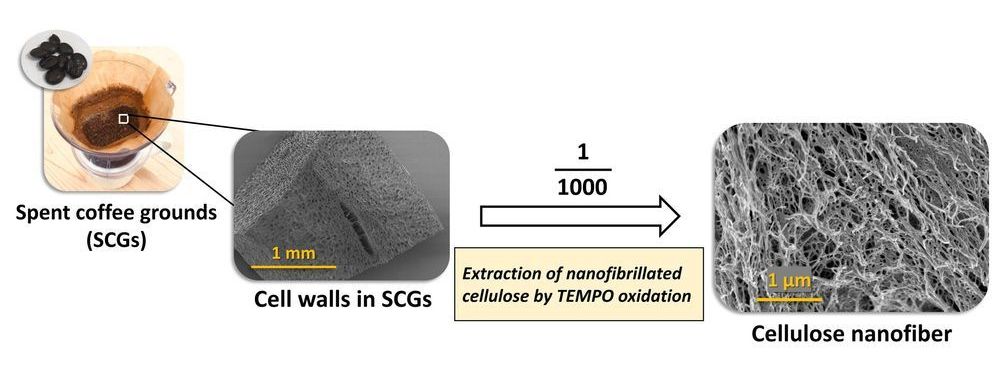The world generates over six million tons of coffee grounds, according to the International Coffee Organization. The journal Agriculture and Food Chemistry reported in 2012 that over half of spent coffee grounds end up in landfills. Cellulose nanofibers are the building blocks for plastic resins that can be made into biodegradable plastic products.
The YNU team, led by Izuru Kawamura, an associate professor at the Graduate School of Engineering Science, set out to build upon previous research into extracting cellulose nanofibers from coffee grounds. They published their findings on April 1 in the journal Cellulose.
“Our ultimate goal is to establish a sustainable recycling system with our cellulose nanofibers in the coffee industry,” Kawamura said. “Now, more and more restaurants and cafés have been banned from using single-use straws. Following that movement, we aim to make a transparent disposable coffee cup and straw with an additive comprising cellulose nanofibers from spent coffee grounds.”
